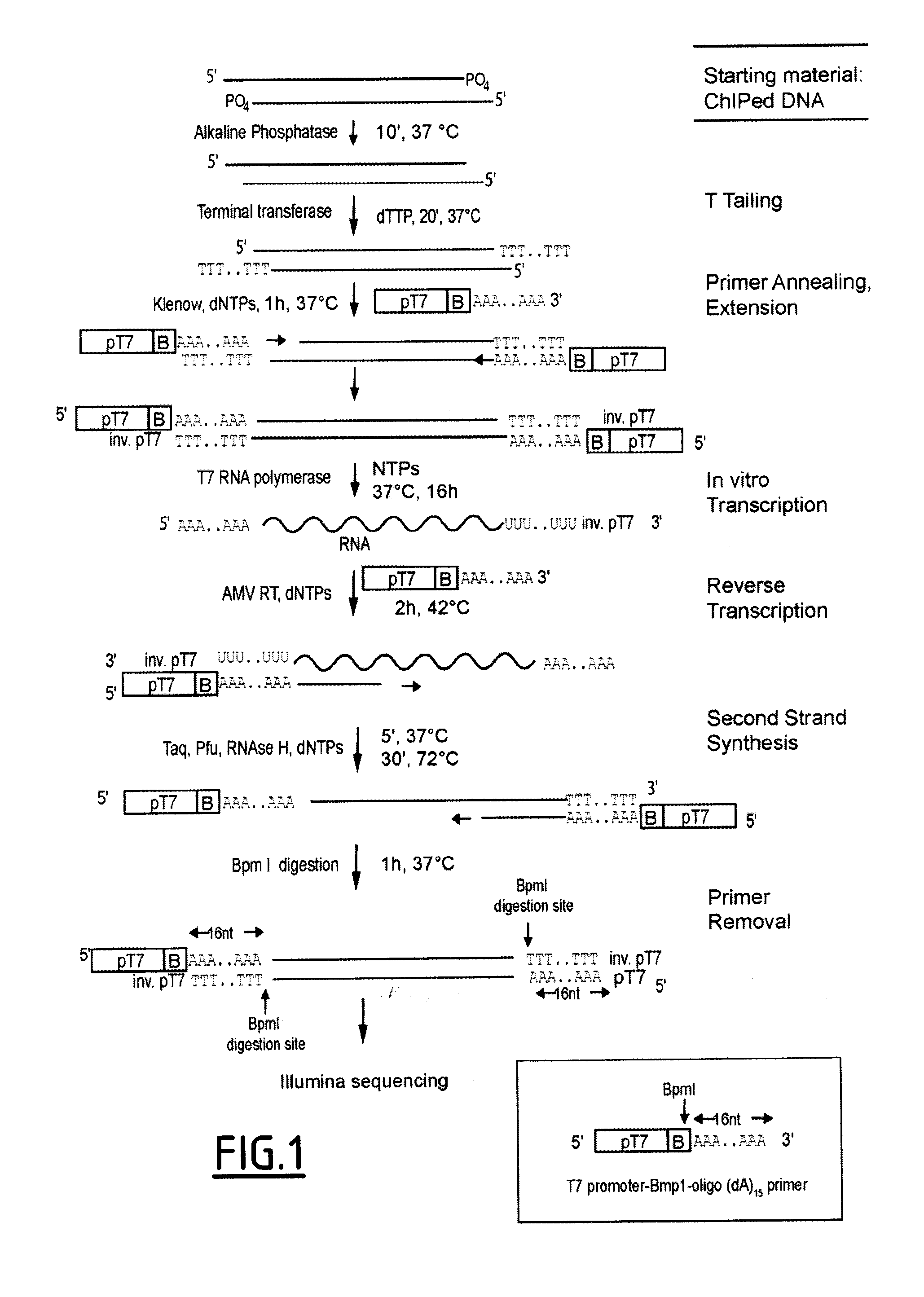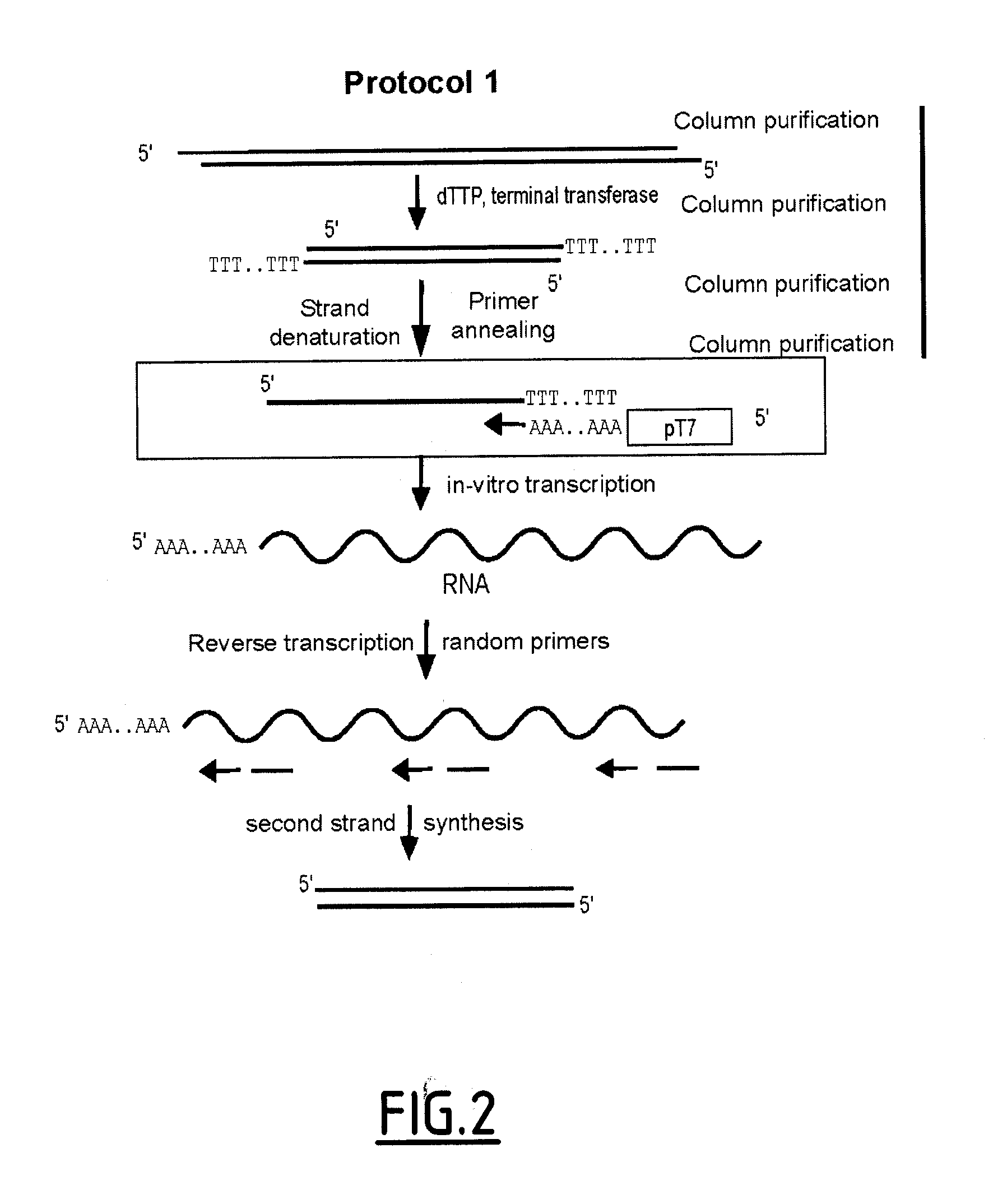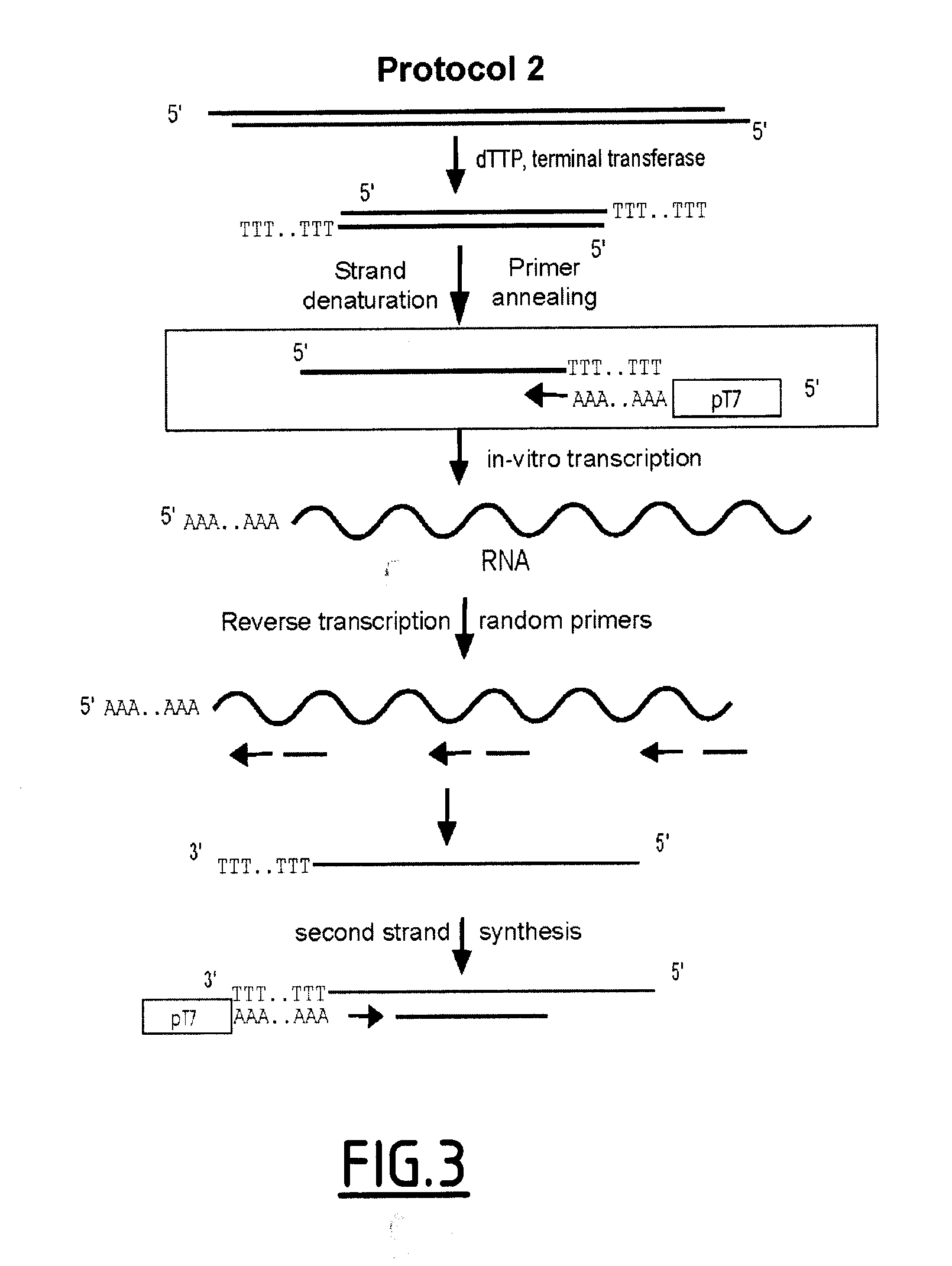Linear DNA amplification
a dna amplification and linear technology, applied in the field of linear amplification methods using rna polymerase, can solve the problems of large (nanogram) amounts of starting dna, the exponential amplification method is liable to bias, and the amplification method is not ideally suited to quantitative analysis, so as to minimize the risk of sample loss, high fidelity and simplicity
- Summary
- Abstract
- Description
- Claims
- Application Information
AI Technical Summary
Benefits of technology
Problems solved by technology
Method used
Image
Examples
Embodiment Construction
Methods
Cell Culture
[0144]F9 EC cells were cultured in DMEM supplemented with 10% FCS and 40 μg / ml gentamicin. Cells were seeded in gelatin-coated tissue culture plates (0.1%) and all-trans retinoic acid (ATRA) was added to a final concentration of 1 μM.
Human H3396 cells were grown in RPMI (with 25 mM HEPES) supplemented with 10% fetal calf serum and gentamicin. For induction, cells were maintained in estrogen (E2)-deficient conditions (charcoal-stripped serum, no phenol red) for 72 h; induction was with 10 nM E2 for 1 h.
Chromatin Immunoprecipitation (ChIP)
[0145]Cells were fixed with 1% para-formaldehyde (Electron Microscopy Sciences) for 30 min at room temperature. ChIPs were performed following standard conditions: Chromatin sonication (200-500 bp length) and IP in lysis buffer (50 mM Tris-Cl pH=8, 140 mM NaCl, 1 mM EDTA, 1% Triton, 0.1% Na-deoxycholate) complemented with protease inhibitor cocktail (Roche 11873580001); 2× washes with lysis buffer; 2× washes with lysis buffer conta...
PUM
| Property | Measurement | Unit |
|---|---|---|
| Temperature | aaaaa | aaaaa |
| Molar density | aaaaa | aaaaa |
| Molar density | aaaaa | aaaaa |
Abstract
Description
Claims
Application Information
 Login to View More
Login to View More - R&D
- Intellectual Property
- Life Sciences
- Materials
- Tech Scout
- Unparalleled Data Quality
- Higher Quality Content
- 60% Fewer Hallucinations
Browse by: Latest US Patents, China's latest patents, Technical Efficacy Thesaurus, Application Domain, Technology Topic, Popular Technical Reports.
© 2025 PatSnap. All rights reserved.Legal|Privacy policy|Modern Slavery Act Transparency Statement|Sitemap|About US| Contact US: help@patsnap.com



